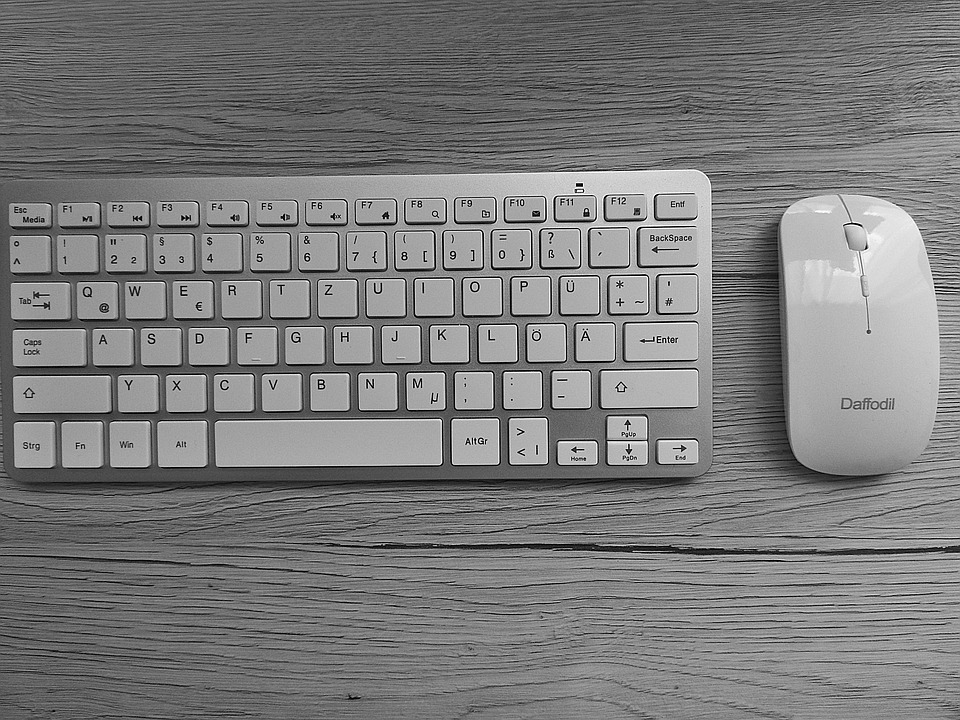Resiliency
Workplace Stress? No Problem! How to Cope with Pressure and Stay Focused

Are you feeling overwhelmed by the pressures of your job? Do you find yourself constantly stressed and anxious about meeting deadlines, dealing with difficult coworkers, or managing a heavy workload? You’re not alone. Workplace stress is a common phenomenon that can affect anyone, regardless of their position or industry. However, it’s how you cope with it that matters. In this article, we’ll explore the causes of workplace stress, its effects on your well-being, and most importantly, provide you with practical tips on how to manage it and stay focused.
The Causes of Workplace Stress
Before we dive into the solutions, it’s essential to understand the root causes of workplace stress. Some common triggers include:
- Heavy workload or tight deadlines
- Conflicting priorities or multiple projects
- Poor communication or lack of feedback
- Unreasonable expectations from managers or clients
- Lack of control or autonomy
- Unclear job expectations or roles
- Unclear company policies or expectations
- Conflicting priorities or values
- Lack of resources or support
- Long working hours or irregular schedules
- Conflicting personalities or work styles
The Effects of Workplace Stress
Workplace stress can have significant effects on your physical and mental health, relationships, and overall well-being. Some of the common effects include:
- Headaches, fatigue, or sleep disturbances
- Irritability, mood swings, or anxiety
- Difficulty concentrating or making decisions
- Increased blood pressure or heart rate
- Tension or muscle aches
- Changes in appetite or sleep patterns
- Decreased job satisfaction or motivation
- Increased absenteeism or tardiness
- Strained relationships or conflicts with coworkers or family
Managing Workplace Stress: Tips and Strategies
Fortunately, there are many ways to manage workplace stress and stay focused. Here are some effective tips and strategies:
Prioritize Your Tasks
- Make a to-do list and prioritize your tasks based on importance and urgency
- Focus on one task at a time to avoid multitasking and reduce stress
- Set realistic deadlines and break down large tasks into smaller, manageable chunks
Take Breaks and Practice Self-Care
- Take short breaks throughout the day to stretch, move around, or meditate
- Practice deep breathing, yoga, or other relaxation techniques to reduce stress and anxiety
- Take time off or schedule a day off to recharge and relax
Communicate Effectively
- Clearly communicate your concerns, needs, and boundaries with your manager or coworkers
- Practice active listening and ask questions to clarify expectations
- Use "I" statements to express your feelings and avoid blaming others
Set Boundaries and Learn to Say No
- Set clear boundaries around your work hours, workload, or responsibilities
- Learn to say no to requests that are unreasonable or outside your scope
- Prioritize your well-being and avoid overcommitting
Seek Support
- Seek support from colleagues, mentors, or a therapist
- Join a support group or online community to connect with others who face similar challenges
- Seek feedback or coaching from a professional to improve your skills and confidence
Take Care of Your Physical Health
- Get enough sleep, exercise regularly, and eat a balanced diet
- Take care of your physical health, such as regular check-ups and screenings
- Avoid substance abuse or unhealthy coping mechanisms
Stay Flexible and Adaptable
- Embrace change and adapt to new situations or challenges
- Stay open-minded and willing to learn new skills or take on new responsibilities
- Focus on the big picture and prioritize long-term goals over short-term stress
Conclusion
Workplace stress is a common phenomenon that can have significant effects on your well-being. However, by understanding the causes, effects, and strategies for managing stress, you can take control of your work life and stay focused. Remember to prioritize your tasks, take breaks, communicate effectively, set boundaries, seek support, take care of your physical health, and stay flexible and adaptable. By implementing these tips and strategies, you’ll be better equipped to manage workplace stress and achieve your goals.
FAQs
Q: What are some common causes of workplace stress?
A: Common causes of workplace stress include heavy workload or tight deadlines, poor communication or lack of feedback, unreasonable expectations, lack of control or autonomy, and conflicting priorities or values.
Q: How can I manage workplace stress?
A: You can manage workplace stress by prioritizing your tasks, taking breaks and practicing self-care, communicating effectively, setting boundaries, seeking support, taking care of your physical health, and staying flexible and adaptable.
Q: What are some signs of workplace stress?
A: Common signs of workplace stress include headaches, fatigue, irritability, mood swings, difficulty concentrating, and changes in appetite or sleep patterns.
Q: Can I take time off from work to manage stress?
A: Yes, it’s essential to take time off from work to manage stress. Schedule a day off or take a vacation to recharge and relax. Remember, taking care of your well-being is crucial to your overall health and job performance.
Remember, workplace stress is a common phenomenon, but it’s how you cope with it that matters. By implementing the strategies and tips outlined above, you’ll be better equipped to manage workplace stress and stay focused on your goals.
Resiliency
Navigating Project Setbacks Effectively

Project management is a complex and multifaceted field that involves planning, organizing, and controlling resources to achieve specific goals and objectives. One of the key challenges that project managers face is navigating setbacks, which can range from minor delays to major crises. Setbacks can occur due to various reasons, including unforeseen circumstances, poor planning, or inadequate resources.
Understanding the Nature of Setbacks
Setbacks are an inevitable part of any project, and project managers need to be prepared to handle them. Setbacks can be categorized into two types: internal and external. Internal setbacks occur due to factors within the project team, such as lack of skills or resources, while external setbacks occur due to factors outside the project team, such as changes in market conditions or unexpected events.
Identifying Potential Setbacks
Project managers can identify potential setbacks by conducting a thorough risk assessment at the beginning of the project. This involves identifying potential risks, assessing their likelihood and impact, and developing strategies to mitigate or avoid them. Project managers should also establish a system for monitoring and reporting progress, which can help to identify potential setbacks early on.
Developing a Contingency Plan
A contingency plan is a document that outlines the steps to be taken in the event of a setback. The plan should include a list of potential setbacks, their likelihood and impact, and the strategies to be used to mitigate or avoid them. The plan should also include a communication strategy, which outlines how stakeholders will be informed of setbacks and progress.
Implementing a Setback Recovery Plan
When a setback occurs, project managers need to implement a recovery plan to get the project back on track. This involves assessing the impact of the setback, identifying the root cause, and developing a plan to mitigate or avoid it. Project managers should also communicate the setback and the recovery plan to stakeholders, and provide regular updates on progress.
Communicating with Stakeholders
Communication is critical when navigating setbacks. Project managers need to communicate the setback and the recovery plan to stakeholders, including team members, sponsors, and customers. The communication should be transparent, honest, and timely, and should include information on the cause of the setback, the impact on the project, and the steps being taken to recover.
Building Resilience
Building resilience is critical for project managers to navigate setbacks. Resilience involves the ability to absorb and recover from setbacks, and to adapt to changing circumstances. Project managers can build resilience by developing a growth mindset, building a strong support network, and practicing self-care.
Learning from Setbacks
Setbacks can provide valuable learning opportunities for project managers. By analyzing the cause of the setback and the steps taken to recover, project managers can identify areas for improvement and develop strategies to avoid similar setbacks in the future.
Implementing Changes
Project managers should implement changes to the project plan and processes to avoid similar setbacks in the future. This may involve updating the risk management plan, revising the project schedule, or changing the project team.
Conclusion
Navigating setbacks is a critical aspect of project management. By understanding the nature of setbacks, identifying potential setbacks, developing a contingency plan, implementing a setback recovery plan, communicating with stakeholders, building resilience, and learning from setbacks, project managers can minimize the impact of setbacks and ensure that projects are delivered on time, within budget, and to the required quality standards.
FAQs
- What is a setback in project management?
A setback is an unexpected event or circumstance that can impact the progress of a project. - How can project managers identify potential setbacks?
Project managers can identify potential setbacks by conducting a thorough risk assessment at the beginning of the project. - What is a contingency plan?
A contingency plan is a document that outlines the steps to be taken in the event of a setback. - How can project managers communicate setbacks to stakeholders?
Project managers should communicate setbacks to stakeholders in a transparent, honest, and timely manner, and provide regular updates on progress. - How can project managers build resilience?
Project managers can build resilience by developing a growth mindset, building a strong support network, and practicing self-care.
Resiliency
How to Find Balance Between Work and Life (Without Burning Out)

Many of us struggle to balance our jobs with personal responsibilities. When that balance is off, it can lead to stress, burnout, and feeling overwhelmed. Over time, this affects not just our work performance, but our health and happiness too.
Let’s talk about why work-life balance is important, what challenges can get in the way, and how you can take small steps to improve it.
Why Work-Life Balance Is So Important
Work-life balance means giving time and energy to both your job and your personal life. When this balance is healthy, you feel more in control, less stressed, and more satisfied at work and at home.
It’s not about being perfect. It’s about making space for what matters—both professionally and personally.
The Benefits of Work-Life Balance
1. Less Stress and Burnout
When you have time for yourself, you’re less likely to feel overwhelmed or emotionally drained. You recover better and stay mentally strong.
2. More Focus and Productivity
When you’re not stretched too thin, you’re able to concentrate better during work hours and get more done in less time.
3. Higher Job Satisfaction
Balancing work and life helps you enjoy your job more and stay motivated, without feeling resentful or exhausted.
Common Challenges That Get in the Way
1. Blurred Lines Between Work and Home
Thanks to phones and laptops, work follows us everywhere. It’s hard to “turn off” when emails and messages keep coming after hours.
2. Long Work Hours
Overtime or shift work can eat into family time and leave little room for rest or fun.
3. Lack of Support
When employers or loved ones don’t understand your need for balance, it becomes harder to set limits or ask for help.
5 Simple Tips to Improve Your Work-Life Balance
1. Set Boundaries
Decide when your workday starts and ends—and stick to it. Don’t check emails or take calls outside of those hours.
2. Make Time for You
Even 15–30 minutes a day of self-care—like walking, reading, or meditating—can make a big difference.
3. Say No When You Need To
Protect your time. You don’t have to say yes to everything, especially if it takes away from your personal priorities.
4. Talk to Your Manager
If your workload is too heavy or unclear, have a respectful conversation about your needs. You might be surprised how open they are to finding a solution.
5. Take Real Breaks
Step away from your screen during the day. A short break helps clear your mind and boosts your energy.
Final Thoughts
Work-life balance isn’t just a nice-to-have—it’s a must. Taking care of yourself helps you show up better in every area of life. You don’t need to overhaul everything overnight. Start with one small change, and build from there.
Remember: balance looks different for everyone. Find what works best for you and protect it like your peace depends on it—because it does.
FAQs
Q: How do I know if I need better work-life balance?
A: If you’re always tired, stressed, or feel like you never have time for yourself, it’s a sign that something needs to shift.
Q: I work from home—how can I create balance?
A: Try setting regular work hours, having a dedicated workspace, and taking short breaks throughout the day. Also, shut down your work devices after hours.
Q: How do I talk to my boss about this?
A: Be honest and respectful. Explain your concerns, share what you need, and suggest solutions that benefit both you and the team.
Resiliency
The Power of Flexibility: How Adapting to Change Can Enhance Your Career and Job Satisfaction

In today’s fast-paced and ever-changing work environment, adapting to change is essential for career growth and job satisfaction. The ability to be flexible and adaptable can make a significant difference in one’s career, helping them to navigate the ups and downs of the job market and achieve their professional goals. In this article, we’ll explore the power of flexibility and how it can enhance your career and job satisfaction.
The Importance of Adapting to Change
Change is inevitable in any organization, and it’s crucial to be prepared to adapt to new situations, processes, and technologies. When you’re able to adapt quickly and effectively, you’ll be better equipped to handle the challenges that come with change, and you’ll be more likely to thrive in a rapidly changing work environment.
Benefits of Flexibility in the Workplace
Increased Job Security
When you’re able to adapt to change, you’re more likely to be seen as a valuable asset to your organization. This can lead to increased job security, as your employer will be more likely to keep you on board due to your ability to adapt to new situations and challenges.
Improved Communication
Flexibility in the workplace also improves communication and collaboration. When team members are able to adapt to new situations, they’re more likely to be able to communicate effectively and work together to achieve common goals.
Enhanced Creativity
Adaptability can also lead to enhanced creativity and problem-solving skills. When faced with new challenges, flexible employees are more likely to think outside the box and come up with innovative solutions.
How to Develop Flexibility in the Workplace
Open-Mindedness
One of the key traits of a flexible employee is an open mind. When you’re open to new ideas and perspectives, you’re more likely to be able to adapt to change and new situations.
Effective Communication
Effective communication is also essential for flexibility in the workplace. When you’re able to clearly communicate with your team and colleagues, you’ll be better equipped to adapt to new situations and challenges.
Embracing Uncertainty
Finally, embracing uncertainty is key to flexibility in the workplace. When you’re able to accept that change is inevitable and that uncertainty is a natural part of the process, you’ll be better equipped to adapt to new situations and challenges.
Conclusion
In conclusion, flexibility is a vital trait for success in today’s fast-paced and ever-changing work environment. By being open-minded, effective in communication, and embracing uncertainty, you’ll be better equipped to adapt to change and achieve your career goals. Remember, the power of flexibility can lead to increased job security, improved communication, and enhanced creativity. By embracing flexibility, you’ll be better equipped to navigate the ups and downs of the job market and achieve the job satisfaction you deserve.
FAQs
Q: What are some common challenges that can make it difficult to adapt to change?
A: Some common challenges that can make it difficult to adapt to change include resistance to change, lack of clear communication, and inadequate training or support.
Q: What are some strategies for overcoming these challenges?
A: Some strategies for overcoming these challenges include seeking out additional training or support, communicating openly with colleagues and management, and focusing on the benefits of change, rather than the difficulties.
Q: How can I demonstrate my flexibility to my employer?
A: Demonstrating your flexibility to your employer can be as simple as being open to new ideas and perspectives, being willing to take on new responsibilities, and showing a willingness to learn and adapt to new situations and challenges.
Q: What are some common myths about flexibility in the workplace?
A: Some common myths about flexibility in the workplace include the idea that being flexible means being able to work long hours or be available 24/7, or that being flexible means sacrificing personal time or priorities. In reality, flexibility is about being able to adapt to new situations and challenges, while still maintaining a healthy work-life balance.
Q: How can I prioritize my own flexibility and self-care in the workplace?
A: Prioritizing your own flexibility and self-care in the workplace can be achieved by setting clear boundaries, taking regular breaks, and practicing stress-reducing techniques, such as meditation or deep breathing exercises.
-

 Career Advice5 months ago
Career Advice5 months agoInterview with Dr. Kristy K. Taylor, WORxK Global News Magazine Founder
-

 Diversity and Inclusion (DEIA)5 months ago
Diversity and Inclusion (DEIA)5 months agoSarah Herrlinger Talks AirPods Pro Hearing Aid
-

 Career Advice5 months ago
Career Advice5 months agoNetWork Your Way to Success: Top Tips for Maximizing Your Professional Network
-

 Changemaker Interviews4 months ago
Changemaker Interviews4 months agoUnlocking Human Potential: Kim Groshek’s Journey to Transforming Leadership and Stress Resilience
-

 Diversity and Inclusion (DEIA)5 months ago
Diversity and Inclusion (DEIA)5 months agoThe Power of Belonging: Why Feeling Accepted Matters in the Workplace
-

 Global Trends and Politics5 months ago
Global Trends and Politics5 months agoHealth-care stocks fall after Warren PBM bill, Brian Thompson shooting
-

 Global Trends and Politics5 months ago
Global Trends and Politics5 months agoUnionization Goes Mainstream: How the Changing Workforce is Driving Demand for Collective Bargaining
-

 Training and Development5 months ago
Training and Development5 months agoLevel Up: How Upskilling Can Help You Stay Ahead of the Curve in a Rapidly Changing Industry









